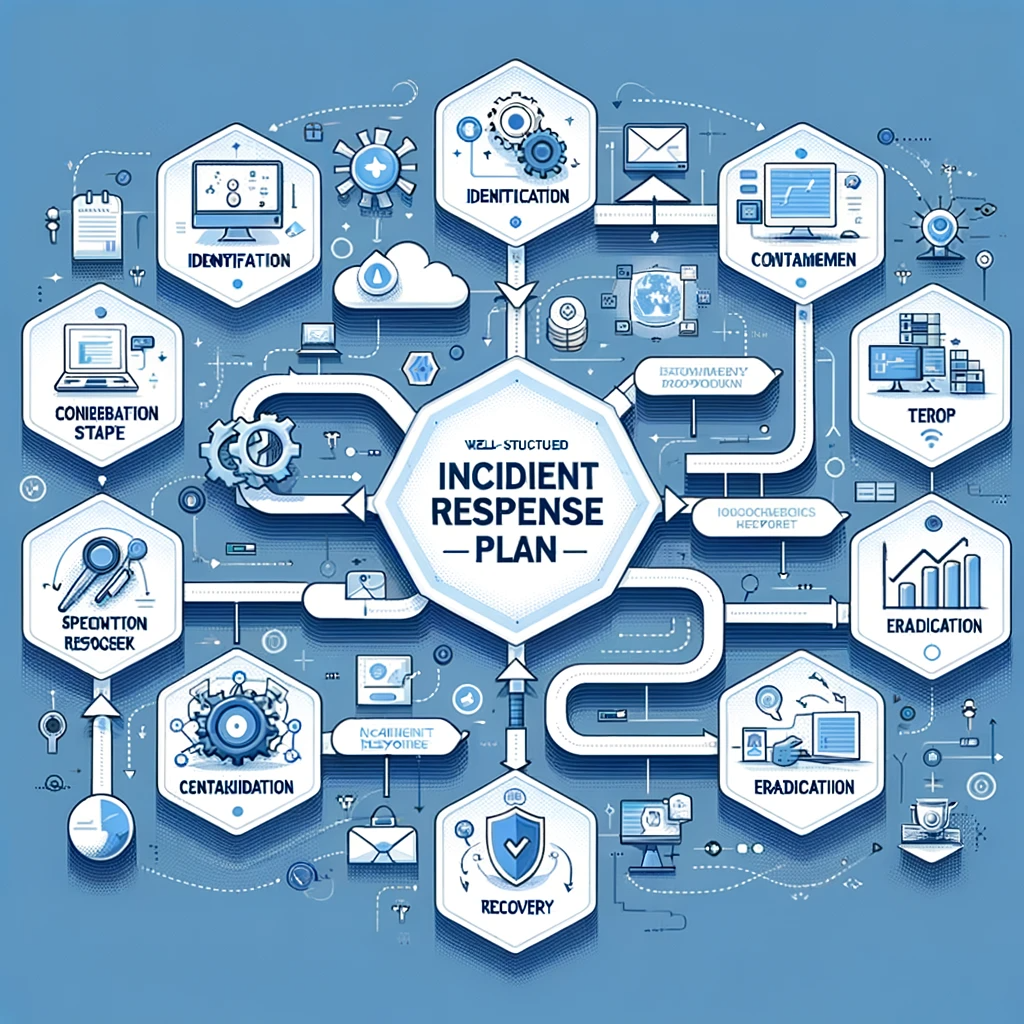Even companies with extensive preventative security controls suffer breaches at times. Chaotic scrambling to respond after an incident finally triggers alerts results in costly delays and errors. By planning end-to-end response workflows in advance, organizations can react swiftly and effectively when crisis strikes.
In this comprehensive guide, we’ll outline strategies and examples for developing incident response plans that equip teams to contain and eradicate threats under pressure. Well-prepared response frameworks reduce business impact and help polish reputations by demonstrating control during incidents.
Define Roles Across IT, Security, Legal, Communications
Successful response requires tightly orchestrated actions across functions from technical investigation to legal obligations and external PR. Clearly define responsibilities of personnel during incidents as part of the planning process.
For example, designate lead incident commander, technical containment leads for networks/endpoints, forensic investigation/log analysis roles, infrastructure recovery duties, a communications lead to interface with executives, PR and regulators, and a legal coordinator to address compliance issues.
Preparing RACI matrices that map out responsibilities, approvers, contributors, and informed stakeholders for different response plan aspects ensures proper cross-functional coordination.
Construct Playbooks for Critical Scenarios
While every incident has unique attributes, many follow common patterns like ransomware attacks, insider data theft, or domain admin credential compromise. Develop tailored playbooks covering technical/ communications steps for addressing major incident scenarios based on risk assessments.
Response playbooks codify best practices specific to each threat type, reducing guesswork when under the gun. They specify containment steps like isolating compromised segments, suggested forensic tools and key artifact collection priorities, eradication steps like resetting credentials and removing malware, and communications templates to use for status updates and notifications.
Automate key aspects of response
Remove manual effort during incidents by having automated capabilities ready for activation. Ensure access to emergency credential rotation to quickly replace compromised admin accounts. Automate system isolation through preconfigured software-defined network policies. Collect forensic artifacts rapidly using automated threat hunting queries. The more that can be executed with a single click, the better.
Maintain Always-Ready Incident Infrastructure
Recurring maintenance ensures an always deployment-ready incident management infrastructure that avoids availability delays during crises. Check that approved forensic tools have current licenses. Validate access to the offline crypto wallet needed for ransomware demands. Cycle out expired SSL certificates on critical portals. Keep infrastructure primed.
Test via Realistic Simulations
Tabletop exercises only reveal so much compared to full-scale incident simulations. Schedule red team attacks, live ransomware detonations on test segments, and scenario runthroughs with external breach coaches. Use simulations to pressure test detection, validate containment steps work, refine runbooks, and identify capability gaps to address. There is no substitute for practice under simulated duress.
Capture Lessons Learned for Future Improvement
After simulations and actual incidents, conduct thorough debriefs focused on what enhancements would improve future response capabilities and outcomes. Analyze which actions were effective or troublesome in order to strengthen plans. Factor lessons learned back into the response framework continuously.
Secure Buy-in Across the Organization
Review response protocols with legal, communications, and business leaders periodically to secure buy-in and feedback across the organization. Shop floor managers to PR teams must align around planned protocols applied during incidents rather than questioning unfamiliar actions mid-crisis.
Following the strategies above enables assembling and maintaining the incident response plan your organization needs before an emergency strikes. Partnering with experienced response consultants ensures you develop not just documents but battle-tested processes. Contact DBGM today to review your current preparedness and start strengthening response capabilities before it’s too late.

